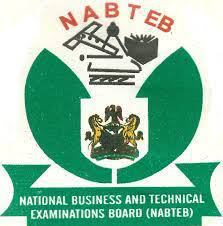2024/2025 Waec SSCE Further Mathematics Expo Questions and Answers
 Answers Loading….. …..
Keep Refreshing this Page.
FURTHER MATHS ANSWERS
(1)
5^4^(3x/4 -1) + 5^3(x-1)/5^(3x – 2)
5^3x/4 – 4 + 5^3x – 3/5^3x – 2
5^3x – 4 + 5^3x – 3/5^3x – 2
(5^3x ÷ 5^4) + 5^3x ÷ 5^3÷5^3x – 2
5^3x/625 + 5^3x/125÷5^3x- 2
5^3x + 5(5^3x) ÷ 5^3x-3
5^3x + 5(5^3x)/625 ÷ 5^3x/25
Let 5^3x = y
y + 5(y)/625 ÷ y/25
y + 5y/625 × 25/y
=6y/625 × 25/y
=6/25
1(b)
F(x+2)-6x^2+5x-8 f(5
X+2=5z
X=5-2
X=3
6x^2 +5x-8
=6(3)^2 + 5(3)-8
=54+15-8
=6!
(2a)
Using y2 – y1/x2 – x1
Where y2 = 7, y1 = -5,
X2 = -2, and X1 = 7
7 – -5/-2 – 7
=7+5/-9
=12/-9
=4/-3
Coordinate points :
-4/3(3 : 2)
=-12/3 : -8/3
= -4 : -2⅔
X = (-4, 2⅔)
(2b)
2/1-√2 – 2/2+√2
=2(2+√2)-2(1-√2)/(1-√2)(2+√2)
=4+2√2 – 2+2√2/2+√2-2√2 – 2
=2 + 4√2/-√2
=(2+4√2)(-√2)/-√2(-√2)
= -2√2 – 4(2)/2
= -8 – 2√2/2
= -4 – √2
(3)
Sn = A/2[2n+(n-1)d]
Where Sn = 165
a = -3, d = 2
165 = A/2[2(-3)+(n-1)2]
165 = n[-6+2n-2]/2
165×2 = n[2n – 8]
330 = 2n² – 8n
2n² – 8n – 330 = 0
n²-4n-165 = 0
Using -b±√b²-4ac/2a
4±√-4²-4(1)(-165)/2(1)
4±√16 + 660/2
4±√676 = 4±26/2
4+26/2 = 30/2
= 15 terms
(4)
Draw the right angled triangle
Using Pythagoras theorem
Third side = √(p+q)² – (p-q)²
=√(p+q+p-q)(p+q-p+q)
Difference of two squares.
=√(2p)(2q)
=√4pq
Adjacent side = 2√pq
Tanx = opp/adj = p – q/2√pq
1 – tan²X = 1-(p-q)²/4pq
=(4pq)-(p²-2pq+q²)/4pq
= -p²+6pq-q²/4pq
= -(p² – 6pq + q²)/4pq
(5)
Draw the diagram
Using cosine law
Cos∅ = 16²+10²-14²/2(16)(10)
Cos∅ = 256 + 100 – 196/320
Cos∅ = 160/320
Cos∅ = 0.5
∅ = cos-¹(0.5)
∅ = 60°
Angle between 10N and 16N
= 180 – ∅ (sum of angles on a straight line)
= 180 – 60
=120°
(6)
Draw the diagram
Taking moment about the pivot,
(T × 25)=(50×10)+(20×45)
25T = 500 + 900
25T = 1400
T = 1400/25
T = 56N
(7)
In a tabular form
Under class interval:
1-5, 6-10, 11-15, 16-20, 21-25, 26-30
Under class mark (X):
3, 8, 13, 18, 23, 28
Under X-Xbar:
-10, -5, 0, 5, 10, 15
Under frequency:
18, 12, 25, 15, 20, 10
Ef = 100
Under f(X – XbarA):
-180, -60, 0, 75, 200, 150
f(X – XbarA) = 185
Where xA = 13
Mean = xA + Ef(X – Xbar)/Ef
=13 + 185/100
=13 + 1.85
=14.85years
PLS NOTE THAT XBAR LOOKS LIKE X WITH MINUS SIGN ON TOP.
(10a) given 4x² – px +1 = 0
For real roots: b² – 4ac >0
(-p) ² – 4(4) (1) > 0
p² – 16 > 0
p² >16
p > ± 4
(10bi) Given: (1 +3x)⁶
Using pascal’s triangle: 1, 6, 15, 20, 15, 6, 1
(1)⁶(3x)º + 6(1)⁵ (3x)¹ + 15 (1)⁴ (3x)₂ + 20(1)³ (3x)³ + (15) (1)²(3x)⁴+6(1)¹(3x)⁵ + 1(1)º(3x)⁶
1 + 6(3x) + 15 (9x²) + 20 (27x³) + 15 (81x⁴) + 6(243 x⁵) 729x⁶
1 + 18x + 135x² + 540x³ + 1215x⁴ 1458x⁵ + 729x⁶
(ii) (1.03)⁶ = (1 + 3(0.01)]
Therefore (1.03)⁶ = 1 + 18(0.01) + 135 (0.01)² + 540(0.01)³ + 1215(0.01)⁴
+ 1458 (0.01)⁵ + 729 (0.01)⁶
+ 1 + 0.18 + 0.0135 + 0.005 + 0.00001215
+ 0.0000001458 + 0.000000000729
= 1.1940523
= 1.194 (4s.f)
(12) prob (pass) = 60% = 60/100 =3/5
Prob (fail) 1-3/5 = 2/5
(a) Prob (atleast two failed) = 1 – prob (ome pass)
= 1 – 10Ci (3/5)¹ (2/5)⁹
1 – (10!/9!) (3/5) (2/5)⁹
= 1 – 10 (3/5) (2/5)⁹
= 1 – 10 (3/5) (0.000262144))
= 1 – 0.001572864
= 0.9984
(12b) prob (exastly half passed)
= 10C5 (3/5)⁵ (2/5)⁵
= 10!/5!5! (6/25)⁵
= 252 (6/25)⁵
= 252 x 0.0007962624
= 0.2007
(12c) prob (at most two failed)
= prob (zero/fail) + prob (one/fail) +prob (two/fail)
= 10C (2/5)º (3/5)10 + 10C (2/5)¹ (3/5)⁹ + 10 C2(2/5)² (3/5)⁸
= (3/5)10 + 10 (2/5) (3/5)⁹ + 45 (2/5)²(3/5)⁸
= 0.060466176 + 0.040310784 + 0.120932352
= 0.1673
(14a)
Draw the diagram
(14b)
From the diagram
a = v – 20/4
2.5 = v – 20/4
V – 20 = 10
V = 10 + 20 = 30m/s
acceleration/retardation = 3/4
2.5/30/T-12 = 3/4
2.5(T – 12)/30 = 3/4
(T – 12) = 30×3/2.5×4
= 90/10 = 9
T – 12 = 9
T = 9 + 12 = 21
t = T – 12
t = 21 – 12
t = 9secs
(14c)
Total distance of the journey
= Area of BCDI + Area of AFEO + Area of DFI
= 1/2(12+8)10 + 1/2(9×10) + 1/2(21+21)20
= (20/2)10 + 90/2 +(42/2)20
=10(10) + 45 + 21(20)
=100 + 45 + 420
= 565m
Answers Loading….. …..
Keep Refreshing this Page.
FURTHER MATHS ANSWERS
(1)
5^4^(3x/4 -1) + 5^3(x-1)/5^(3x – 2)
5^3x/4 – 4 + 5^3x – 3/5^3x – 2
5^3x – 4 + 5^3x – 3/5^3x – 2
(5^3x ÷ 5^4) + 5^3x ÷ 5^3÷5^3x – 2
5^3x/625 + 5^3x/125÷5^3x- 2
5^3x + 5(5^3x) ÷ 5^3x-3
5^3x + 5(5^3x)/625 ÷ 5^3x/25
Let 5^3x = y
y + 5(y)/625 ÷ y/25
y + 5y/625 × 25/y
=6y/625 × 25/y
=6/25
1(b)
F(x+2)-6x^2+5x-8 f(5
X+2=5z
X=5-2
X=3
6x^2 +5x-8
=6(3)^2 + 5(3)-8
=54+15-8
=6!
(2a)
Using y2 – y1/x2 – x1
Where y2 = 7, y1 = -5,
X2 = -2, and X1 = 7
7 – -5/-2 – 7
=7+5/-9
=12/-9
=4/-3
Coordinate points :
-4/3(3 : 2)
=-12/3 : -8/3
= -4 : -2⅔
X = (-4, 2⅔)
(2b)
2/1-√2 – 2/2+√2
=2(2+√2)-2(1-√2)/(1-√2)(2+√2)
=4+2√2 – 2+2√2/2+√2-2√2 – 2
=2 + 4√2/-√2
=(2+4√2)(-√2)/-√2(-√2)
= -2√2 – 4(2)/2
= -8 – 2√2/2
= -4 – √2
(3)
Sn = A/2[2n+(n-1)d]
Where Sn = 165
a = -3, d = 2
165 = A/2[2(-3)+(n-1)2]
165 = n[-6+2n-2]/2
165×2 = n[2n – 8]
330 = 2n² – 8n
2n² – 8n – 330 = 0
n²-4n-165 = 0
Using -b±√b²-4ac/2a
4±√-4²-4(1)(-165)/2(1)
4±√16 + 660/2
4±√676 = 4±26/2
4+26/2 = 30/2
= 15 terms
(4)
Draw the right angled triangle
Using Pythagoras theorem
Third side = √(p+q)² – (p-q)²
=√(p+q+p-q)(p+q-p+q)
Difference of two squares.
=√(2p)(2q)
=√4pq
Adjacent side = 2√pq
Tanx = opp/adj = p – q/2√pq
1 – tan²X = 1-(p-q)²/4pq
=(4pq)-(p²-2pq+q²)/4pq
= -p²+6pq-q²/4pq
= -(p² – 6pq + q²)/4pq
(5)
Draw the diagram
Using cosine law
Cos∅ = 16²+10²-14²/2(16)(10)
Cos∅ = 256 + 100 – 196/320
Cos∅ = 160/320
Cos∅ = 0.5
∅ = cos-¹(0.5)
∅ = 60°
Angle between 10N and 16N
= 180 – ∅ (sum of angles on a straight line)
= 180 – 60
=120°
(6)
Draw the diagram
Taking moment about the pivot,
(T × 25)=(50×10)+(20×45)
25T = 500 + 900
25T = 1400
T = 1400/25
T = 56N
(7)
In a tabular form
Under class interval:
1-5, 6-10, 11-15, 16-20, 21-25, 26-30
Under class mark (X):
3, 8, 13, 18, 23, 28
Under X-Xbar:
-10, -5, 0, 5, 10, 15
Under frequency:
18, 12, 25, 15, 20, 10
Ef = 100
Under f(X – XbarA):
-180, -60, 0, 75, 200, 150
f(X – XbarA) = 185
Where xA = 13
Mean = xA + Ef(X – Xbar)/Ef
=13 + 185/100
=13 + 1.85
=14.85years
PLS NOTE THAT XBAR LOOKS LIKE X WITH MINUS SIGN ON TOP.
(10a) given 4x² – px +1 = 0
For real roots: b² – 4ac >0
(-p) ² – 4(4) (1) > 0
p² – 16 > 0
p² >16
p > ± 4
(10bi) Given: (1 +3x)⁶
Using pascal’s triangle: 1, 6, 15, 20, 15, 6, 1
(1)⁶(3x)º + 6(1)⁵ (3x)¹ + 15 (1)⁴ (3x)₂ + 20(1)³ (3x)³ + (15) (1)²(3x)⁴+6(1)¹(3x)⁵ + 1(1)º(3x)⁶
1 + 6(3x) + 15 (9x²) + 20 (27x³) + 15 (81x⁴) + 6(243 x⁵) 729x⁶
1 + 18x + 135x² + 540x³ + 1215x⁴ 1458x⁵ + 729x⁶
(ii) (1.03)⁶ = (1 + 3(0.01)]
Therefore (1.03)⁶ = 1 + 18(0.01) + 135 (0.01)² + 540(0.01)³ + 1215(0.01)⁴
+ 1458 (0.01)⁵ + 729 (0.01)⁶
+ 1 + 0.18 + 0.0135 + 0.005 + 0.00001215
+ 0.0000001458 + 0.000000000729
= 1.1940523
= 1.194 (4s.f)
(12) prob (pass) = 60% = 60/100 =3/5
Prob (fail) 1-3/5 = 2/5
(a) Prob (atleast two failed) = 1 – prob (ome pass)
= 1 – 10Ci (3/5)¹ (2/5)⁹
1 – (10!/9!) (3/5) (2/5)⁹
= 1 – 10 (3/5) (2/5)⁹
= 1 – 10 (3/5) (0.000262144))
= 1 – 0.001572864
= 0.9984
(12b) prob (exastly half passed)
= 10C5 (3/5)⁵ (2/5)⁵
= 10!/5!5! (6/25)⁵
= 252 (6/25)⁵
= 252 x 0.0007962624
= 0.2007
(12c) prob (at most two failed)
= prob (zero/fail) + prob (one/fail) +prob (two/fail)
= 10C (2/5)º (3/5)10 + 10C (2/5)¹ (3/5)⁹ + 10 C2(2/5)² (3/5)⁸
= (3/5)10 + 10 (2/5) (3/5)⁹ + 45 (2/5)²(3/5)⁸
= 0.060466176 + 0.040310784 + 0.120932352
= 0.1673
(14a)
Draw the diagram
(14b)
From the diagram
a = v – 20/4
2.5 = v – 20/4
V – 20 = 10
V = 10 + 20 = 30m/s
acceleration/retardation = 3/4
2.5/30/T-12 = 3/4
2.5(T – 12)/30 = 3/4
(T – 12) = 30×3/2.5×4
= 90/10 = 9
T – 12 = 9
T = 9 + 12 = 21
t = T – 12
t = 21 – 12
t = 9secs
(14c)
Total distance of the journey
= Area of BCDI + Area of AFEO + Area of DFI
= 1/2(12+8)10 + 1/2(9×10) + 1/2(21+21)20
= (20/2)10 + 90/2 +(42/2)20
=10(10) + 45 + 21(20)
=100 + 45 + 420
= 565m
Categories: WAEC Syllabus Past Questions and Answers
0 Responses




